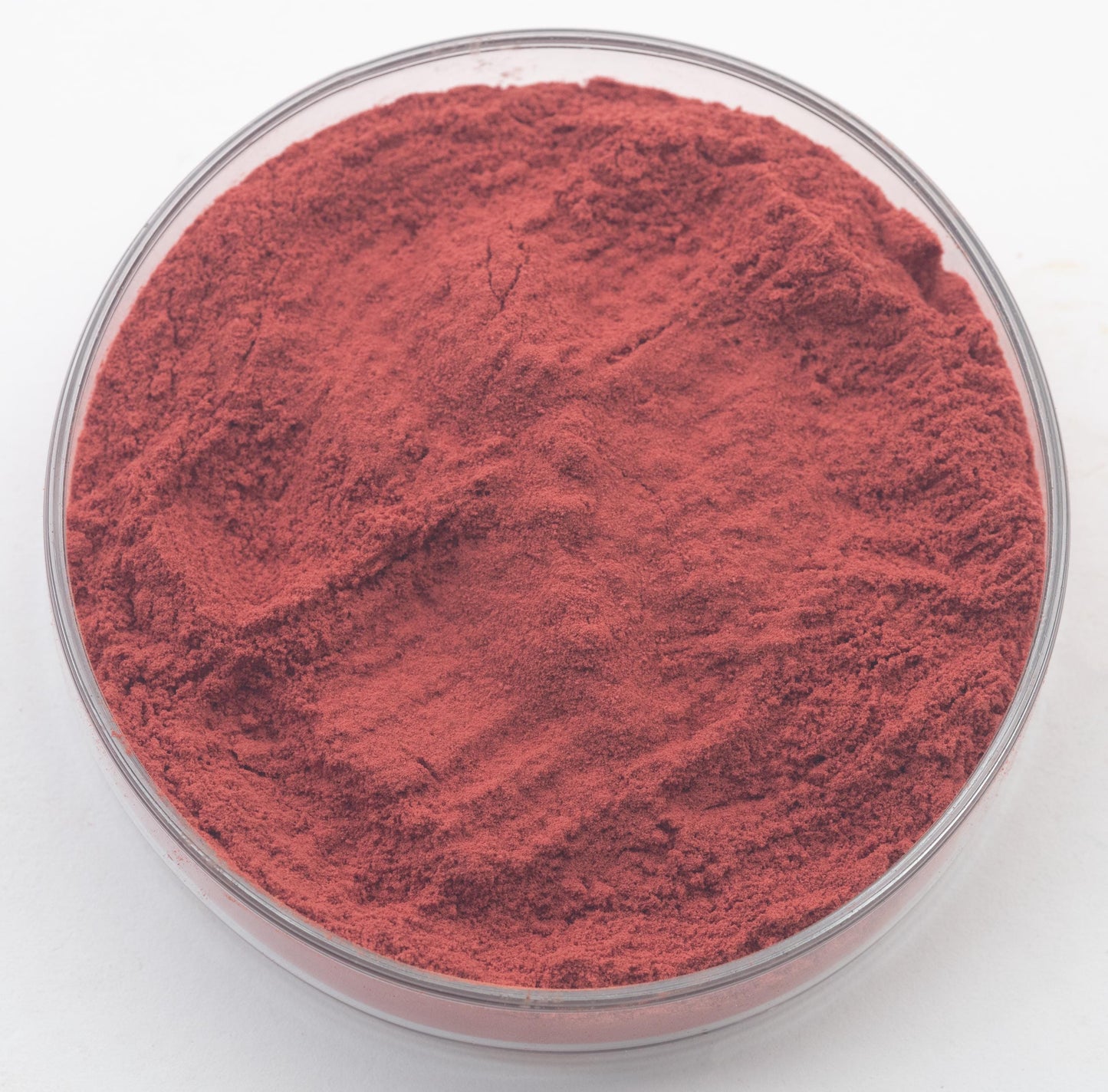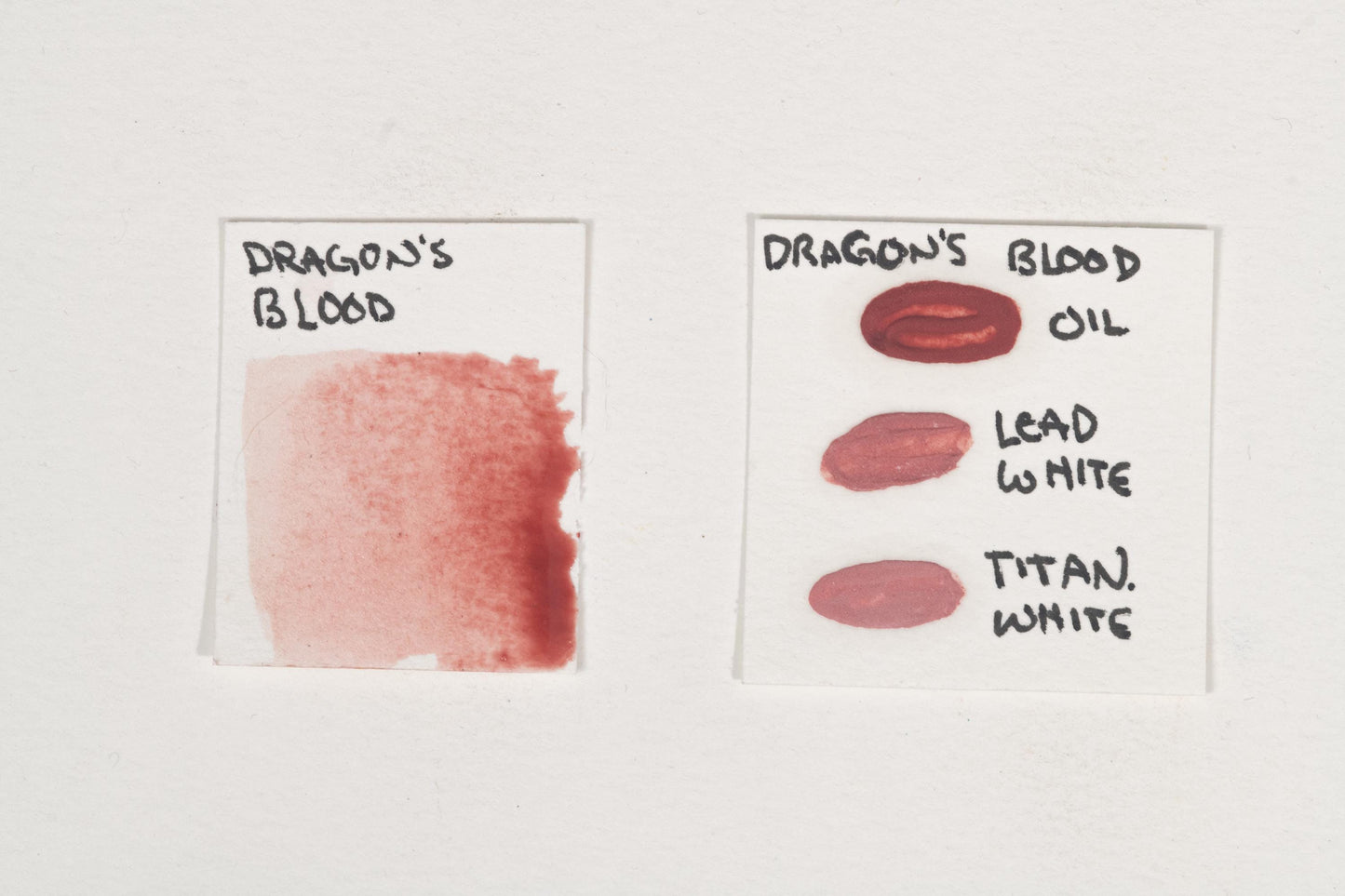Dragon's Blood
Dragon's Blood
Couldn't load pickup availability
Share



Description
Dragon’s Blood is a natural resin based pigment and dye, historically derived from the sap of various plant species in the genera Daemonorops, Dracaena, Pterocarpus, and Croton. The deep red resin is harvested, dried, and ground into a fine powder, producing a warm, rich red pigment with slightly brownish undertones. It has been used for centuries in art, varnishes, lacquers, and medicinal preparations.
Dragon’s Blood is known for its deep, warm red tones, though it is generally more fugitive compared to mineral-based reds. It is best suited for applications where permanence is not a primary concern, such as decorative painting, manuscript illumination, or historical reproduction work. When used as a dye, it produces a translucent crimson that can vary in hue depending on the binder and substrate.
History
Dragon’s Blood has an extensive history, dating back to the ancient Mediterranean, China, India, and the Middle East. The Romans and Greeks used it as a pigment, incense, and medicine, often attributing mystical properties to its intense red color. In medieval manuscript illumination, it was sometimes used for its striking color, though its lightfastness limited its use in permanent paintings. In the pictured artwork 'Pentecost' by Giotto and Workshop, Dragon's Blood is used for the orange-red flames over the heads of the Apostles.
During the Renaissance, Dragon’s Blood was a favored pigment in varnishes and lacquers, particularly in Italy and Spain, where it was used to tint furniture, musical instruments, and fine art. Asian artisans also employed it in the production of traditional red lacquers. In the 18th and 19th centuries, it was marketed as a medicinal remedy and as a stain for marble, leather, and wood.
Despite its historical significance, Dragon’s Blood fell out of favor in professional painting due to its fugitive nature. However, it remains in use among artists, conservators, and those interested in historical pigment restoration and natural dye applications.
Health and Safety
Precautions:
Keep out of reach of children and pets.
Do not consume.
Not for cosmetic or food usage.
Do not spray apply.
For further health information, contact a poison control center.
Use care when handling dry pigments and avoid dust formation.
Use particular caution with fibrous, fine, or toxic pigments.
Do not eat, drink, or smoke near dry pigments.
Avoid breathing in pigment dust and use a NIOSH-certified dust respirator with sufficient rating for dry pigment.
Wash hands immediately after use or handling.
If dust is likely, always wear protective clothing to keep out of eyes, lungs, and off skin, as well as keep the area ventilated.
This product may contain chemicals known by the State of California to cause cancer, birth defects, or reproductive harm.
Warnings and bottle information are abbreviated.
Pigment Information
Pigment Type: Natural (Organic Resin) from Daemonorops dracaena
Suitable Mediums: Watercolor, Oil, Tempera, Ink, Lacquer, Varnish
Lightfastness: Low (Fugitive)
Opacity: Semi-translucent
Other Names: Sanguis Draconis, Sangre de Drago
Image: 'Pentecost' by Giotto and Workshop from the National GalleryColor
Index Code: NR31



